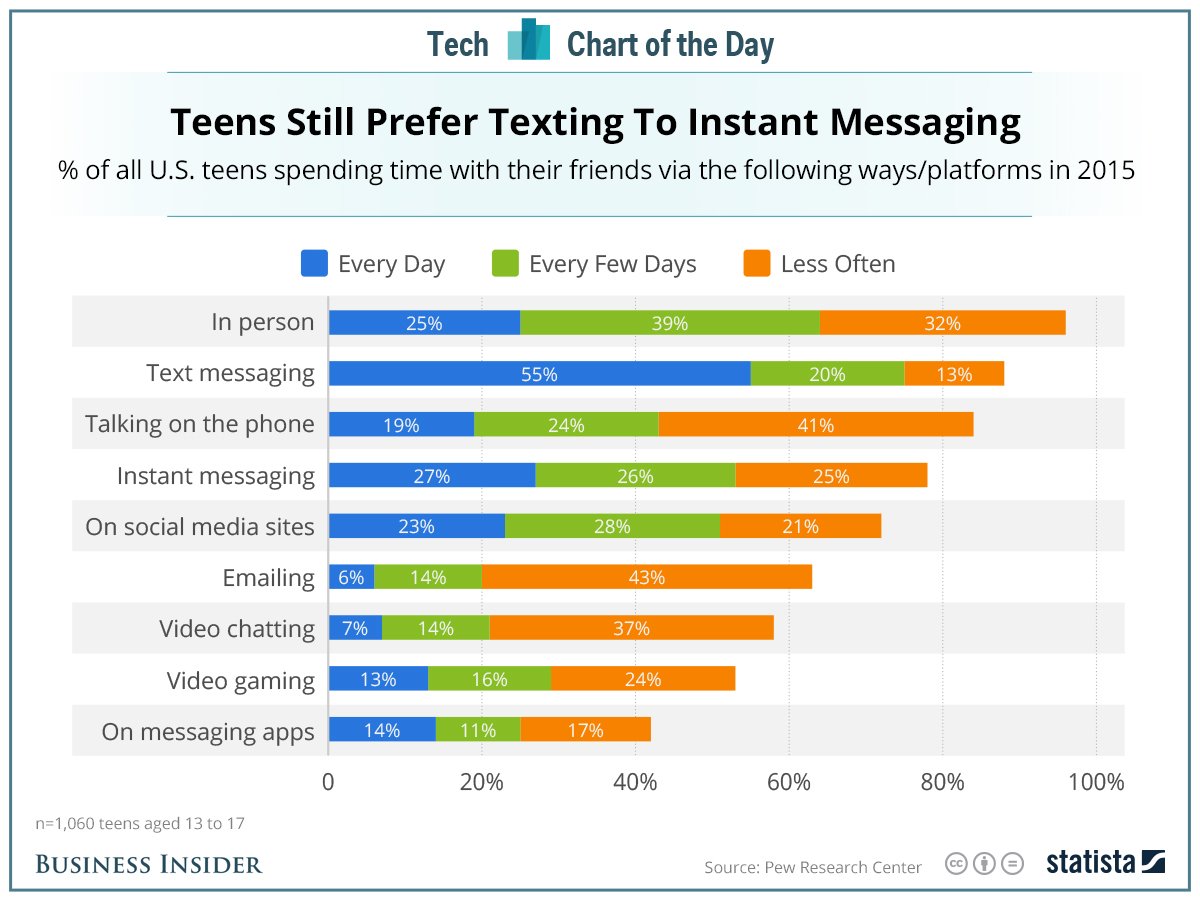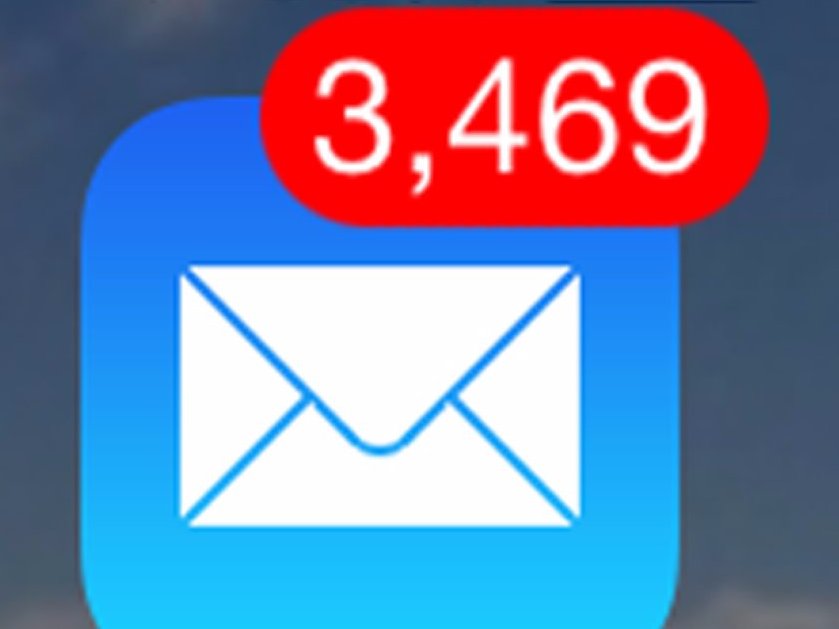FOLLOW UP: How changing communication preferences are changing HR technologies
Last week on the blog I shared a chart on US teens' communication preferences which showed, (among a few other interesting things), that when it comes to interactions with their friends, email is this group's least preferred method/tool of choice. If you are a parent of a teen, or have ever just observed a teen for more than 10 minutes or so, you would notice them pretty furiously tapping away on their phones almost non-stop - with the vast majority of this activity being SMS messaging, (and to a lesser extent using SnapChat, WhatsApp, and social tools like Instagram).
What they are almost certainly not doing is sending or replying to email.
It might be hard for us crusty adults to want to deal with or accept, but anyone under about 25 or so did not grow up relying on email for anything, (save for possibly communications with 'grown ups').
Whenever I run a piece like the 'teens hate email' one, I usually get a few comments or replies on Twitter that more or less say the same thing - 'So what? Email isn't ever going away. When these teens enter the workforce they will simply have to adapt. Blah, blah, blah and get off of my lawn.'
Mostly, it seems, professional adults don't generally see any significant change to email's ubiquity and primacy as the 'professional' communication technology of choice, and fully expect teens and Gen Z types to have to just deal with it if and when they want to get (and keep), a real job.
But is it really that simple? Or asked differently, can us 'adults' really get away with thinking that way? Forever?
So after the 'teens hate email' piece ran last week I received an email from Kay Lucas, VP of Product Strategy at PeopleMatter. In case you are not familiar, PeopleMatter is a leading provider of workforce and talent management technology solutions, focusing primarily on retail, hospitality, and other service provider organizations. Think restaurant chains, convenience stores, hotels - that sort of thing.
The kinds of organizations that do high volume, rapid hiring. And, more importantly, the kinds of organizations that tend to employ lots of folks in their teens and twenties - the kinds of folks that tend to see email as their least preferred method or technology for communication.
So to get back to Kay, here is the full text of the email she sent over last week after my post ran:
Steve,
This past weekend we rolled out a new release and ditched email as being required for applicants for this reason. Just thought you’d be interested in knowing.
Thanks,
Kay
What?
Candidates can actually apply for a job without an email address?
I had to know more, so I asked Kay for some additional background on this decision and she shared with me some more details (note, I checked with Kay and have her permission to share these emails here).
(Kay Lucas, PeopleMatter)
We decided to do this (allowing customers to make Email an optional field for candidates), because our customers felt like they were losing applicants because email was required. One very large casual dining customer in particular really thought that they were losing two whole groups of people: 1) the younger generation as you point out, 2) the non-tech generation – think of back of the house employees in restaurants and retail. It could be folks where English is not their first language and/or they just don’t care about email because they have no reason for it.
We also know that in our space (service industry), the majority of employees don’t have computers – their phone is their connection. So, texting and mobile friendly are key.
The release literally just happened this past Saturday morning. Here’s what we have already seen:
On Sunday, the quantity of job applications increased by 5% from the prior Sunday. On Monday, the quantity of job applications increased by 22% from the prior Monday. Wow! We are already blown away and totally pumped we did this. Hats off to our clients and I love listening to them. Makes us so much smarter. They get it and we are so happy that we’ve made this change. The labor market is tight so this is a really big deal for them.
Ok, so I love this for a few different reasons. One, it gives us a direct, real-world example of how teens and others communication preferences, (essentially mobile phone driven, and SMS heavy), are being acknowledged and reflected in how organizations and HR technology providers are deploying HR tools. If your target applicant pool would prefer not to use email, (or simply can't use email), then provide a way for them to interact and apply with you using their desired method. Image courtesy PeopleMatter - click for a large version
Image courtesy PeopleMatter - click for a large version
Second, it shows really well how good my friends at PeopleMatter understand and react to their customers. Retail and food service are precisely the kinds of industries that would likely have plenty of candidates in the email hating teen to young adult cohort, and this 'email optional' update shows how well the technology can adapt to these needs.
And finally, it serves as a great reminder to all of us, HR leaders and HR technology providers alike, that just because us old farts that make all of the rules and all of the decisions are not that we are not always right, and that we need to be open minded enough to adapt to what today's 19 year olds think too.
That is if we want to remain relevant once that 19 year old becomes out 26 year old boss in a few years.
Thanks again to Kay Lucas at PeopleMatter for sharing the information on their approach to this issue and if you are an HR leader from retail or food service or hospitality be sure to check out what PeopleMatter is up to.
Have a great week!
 ATS,
ATS,  Technology tagged
Technology tagged  HR,
HR,  HR Tech,
HR Tech,  Recruiting,
Recruiting,  Technology,
Technology,  communication,
communication,  email
email  Email Article
Email Article 
 Print Article
Print Article 



